This post may contain affiliate links. Please read our disclosure policy.
How to make cranberry juice at home with just two ingredients (plus water), no juicer or blender, and in under 30 minutes on the stovetop! This super refreshing, sweet and tart homemade cranberry juice is packed with flavor and nutrients and can be made with fresh or frozen cranberries!
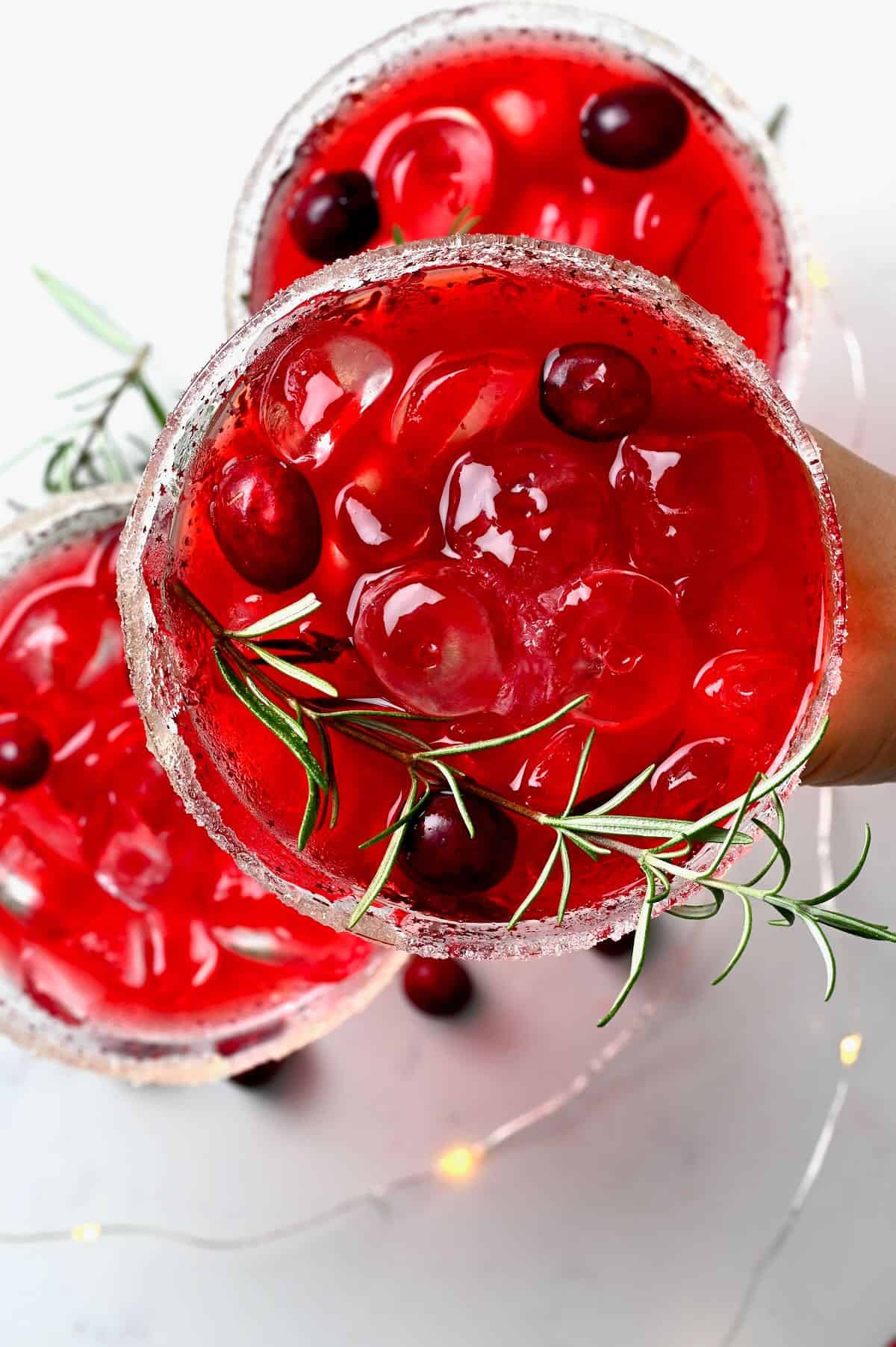
I’ve shared several simple homemade juice recipes over the last few years (including apple juice, kiwi juice, orange juice, carrot juice, and pomegranate juice!), usually made using a juicer or blender. However, this homemade cranberry juice uses a stovetop method for the best results!
Not only does this homemade cranberry juice taste miles above and beyond store-bought options, but it’s cheaper to make, you can avoid pesticides (by using organic berries), and you can control the sugar content (as well as what type of sugar to use: regular, unrefined, or even a sugar-free sweetener). Even better, the juice isn’t diluted with any other juice either (unless you decide you want it to be!).
Best of all, I’ve included several methods for how to make cranberry juice below. These include stovetop, blender, and Instant Pot homemade cranberry juice. As well as several optional add-ins, top tips, and other FAQs!
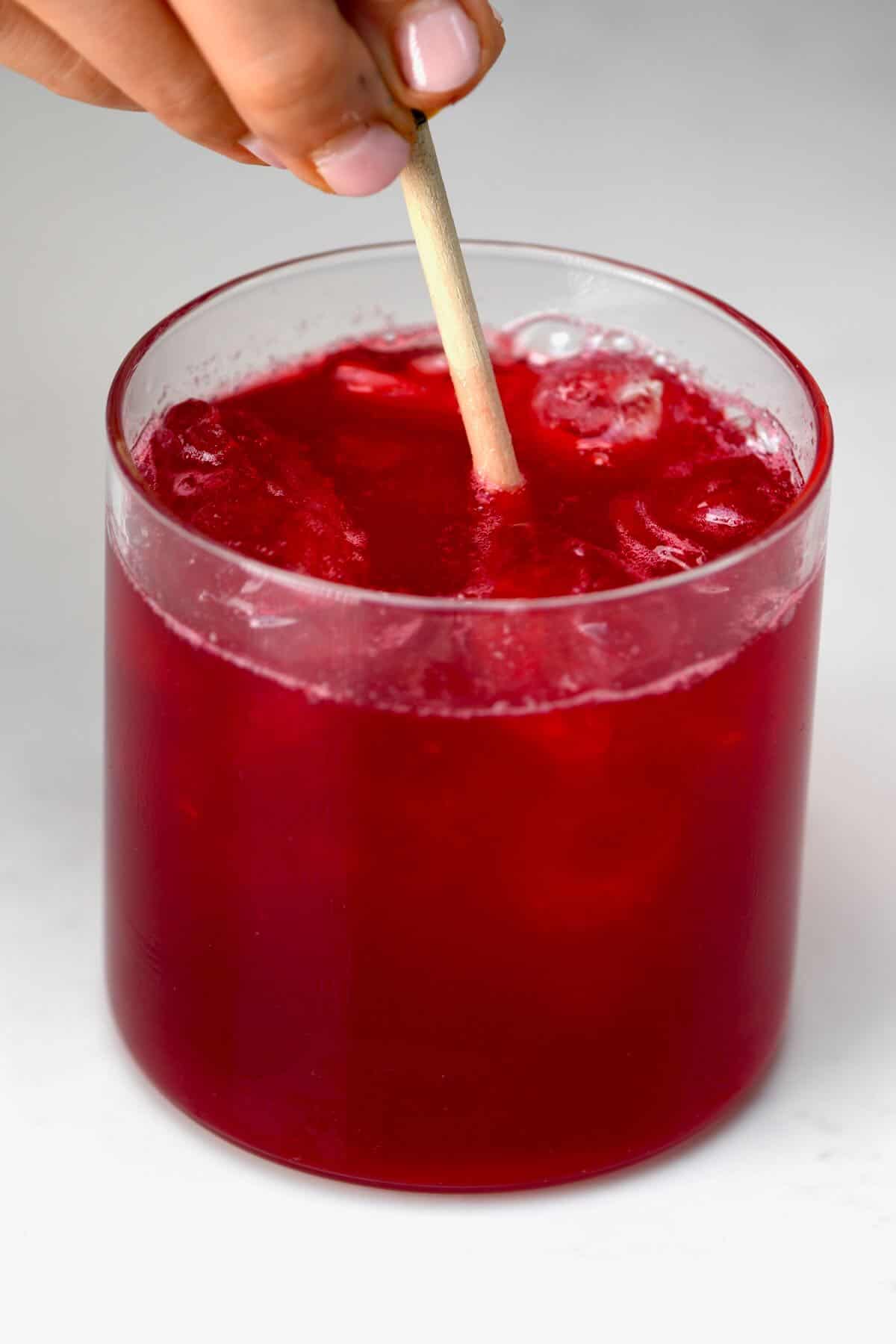
Want to save this recipe?
What are the Cranberry Juice Benefits?
You’ve likely heard that cranberry juice is an excellent home-cure for UTIs. But did you know that this usually doesn’t extend to the sugar-laden “barely even real cranberry juice” that you usually find stocked in grocery stores? Using real cranberry juice (like this homemade one) is critical to making the most of cranberry health benefits. That’s not the only cranberry juice benefit either; it also:
- Is an excellent source of vitamin C and E (which double up as strong antioxidants).
- Those antioxidants help to prevent several chronic health issues, including diabetes, cancer, and heart disease.
- Contains anti-inflammatory properties and polyphenols that can also improve heart health and digestive health.
- Contains a beneficial compound that can prevent and treat UTIs.
You can read more about the health benefits (and side effects) of real cranberry juice here and here!
Homemade Fresh Cranberry Juice Ingredients
- Cranberries: in this cranberry juice recipe, you can use fresh or frozen cranberries (thaw them first). I recommend using organic berries to avoid pesticides. I like to stock up on fresh cranberries when they’re on offer and store them in the freezer until needed.
- Water: use filtered if preferred.
- Sweetener: there are several ways that you can sweeten this homemade cranberry juice. Including with granulated sugar, natural sweeteners like maple or honey/vegan honey (my preferred option), or even make no sugar cranberry juice with a sugar-free sweetener like erythritol/stevia.
I don’t recommend omitting sweetener entirely, as cranberry juice is certainly pucker-inducing. However, feel free to experiment.
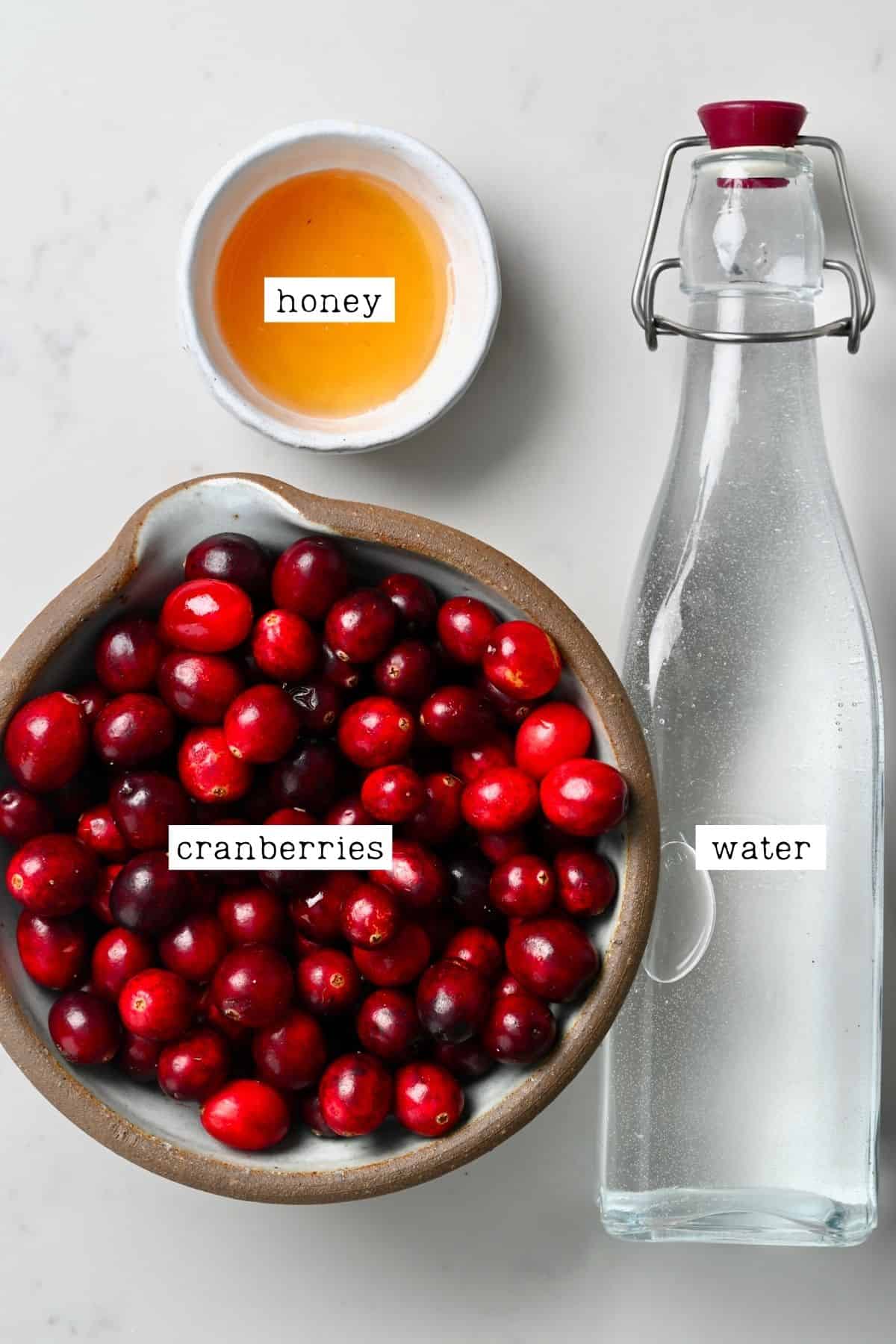
Optional Add-ins and Variations
- Orange juice: orange juice is a popular addition to cranberry juice recipes. It pairs wonderfully with the cranberries while adding some natural sweetness. Use oranges, clementines, mandarins, etc. For a very subtle flavor enhancement, add just a tablespoon or two of the juice.
- Lemon/Lime juice: for added brightness to the juice (add alone or alongside orange juice), add a splash of lemon juice or lime juice.
- Pineapple juice: pineapple juice is a great way to naturally sweeten this cranberry juice recipe, so you can add less additional sweetener. Plus, the combination tastes delicious.
- Apple juice: freshly squeezed apple juice is another way to naturally sweeten the cranberry juice.
- Cinnamon: add a cinnamon stick to the simmering mixture for a subtle aromatic cinnamon-infused cranberry juice.
How to Make Cranberry Juice?
Juicing cranberries is simple to do and requires just two steps!
Step 1: Cook the Cranberries
In a large saucepan (or Dutch oven), combine the cranberries and water and bring to a boil over high heat. Once boiling, reduce the heat to a simmer. Cook for a further 20 minutes, or until the cranberries are softened, and the majority have popped.
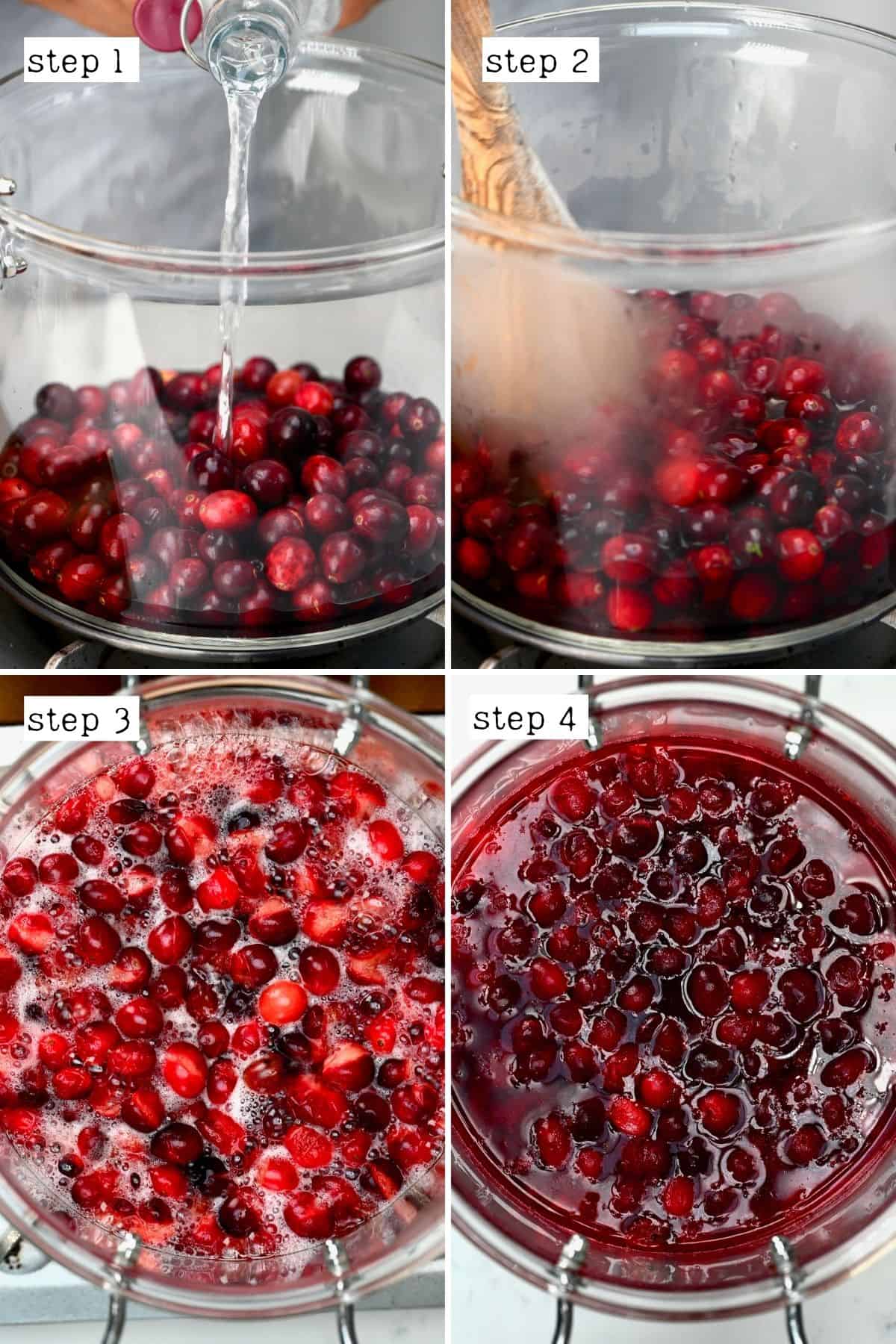
Step 2: Strain the Cranberry Juice
Then, pour the mixture through a fine mesh sieve or nut milk bag, allowing all the liquid to strain. Then press with the back of a spoon (using a sieve/strainer) or squeeze with your hands (using a nut milk bag, but only when it’s cool enough to do so) to get as much excess liquid from the cranberries as possible.
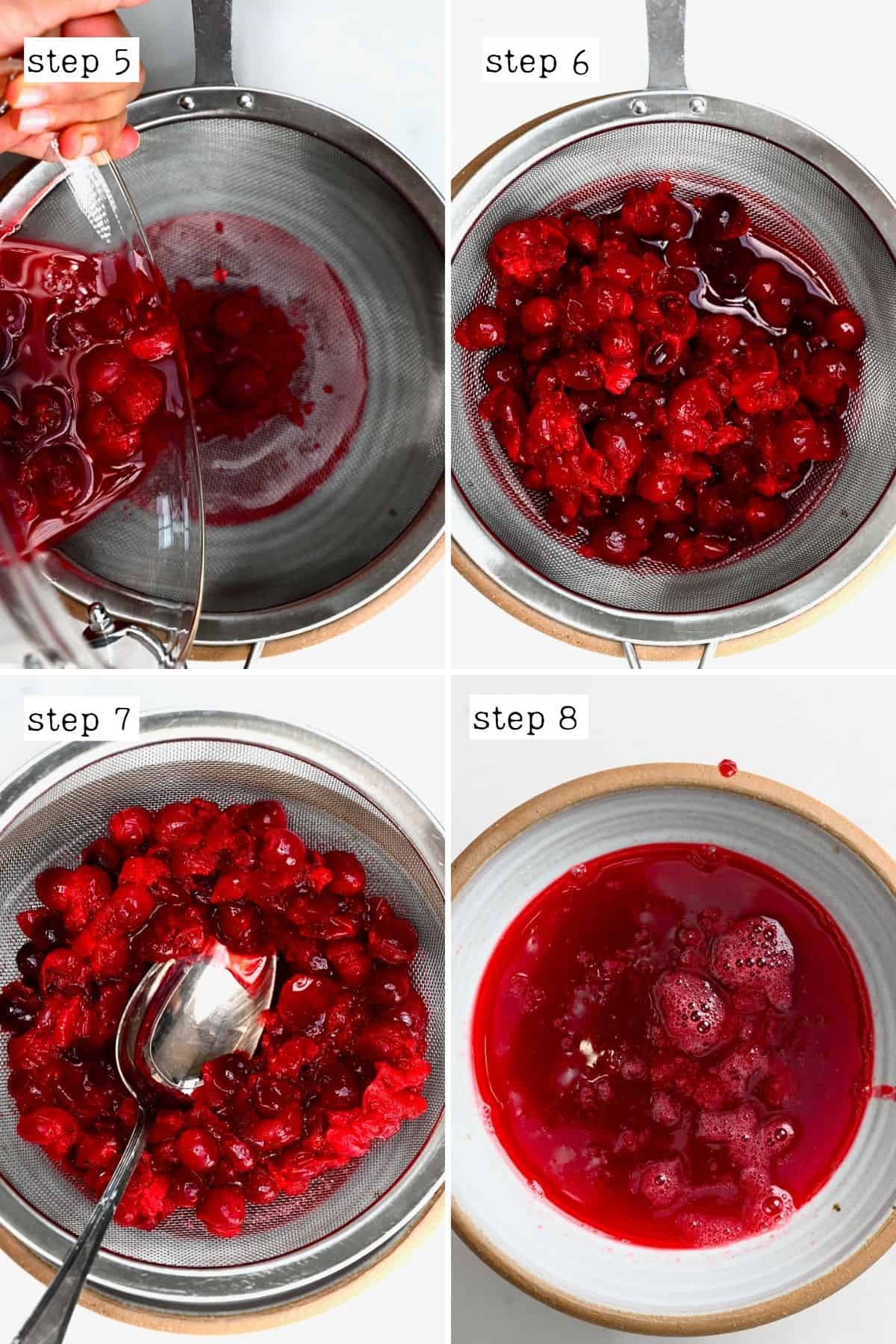
Mix well, add your sweetener of choice (to taste) and then allow the juice to cool down.
If you’re using a granulated sugar/sweetener, you’ll likely need to return it to the pan to reheat until the sugar dissolves.
Once cool, either drink the juice immediately. Or transfer the juice to an airtight jar/bottle in the fridge to save for later!
Don’t discard the leftover cranberry puree. Read the FAQs for my suggestions on how to use this!
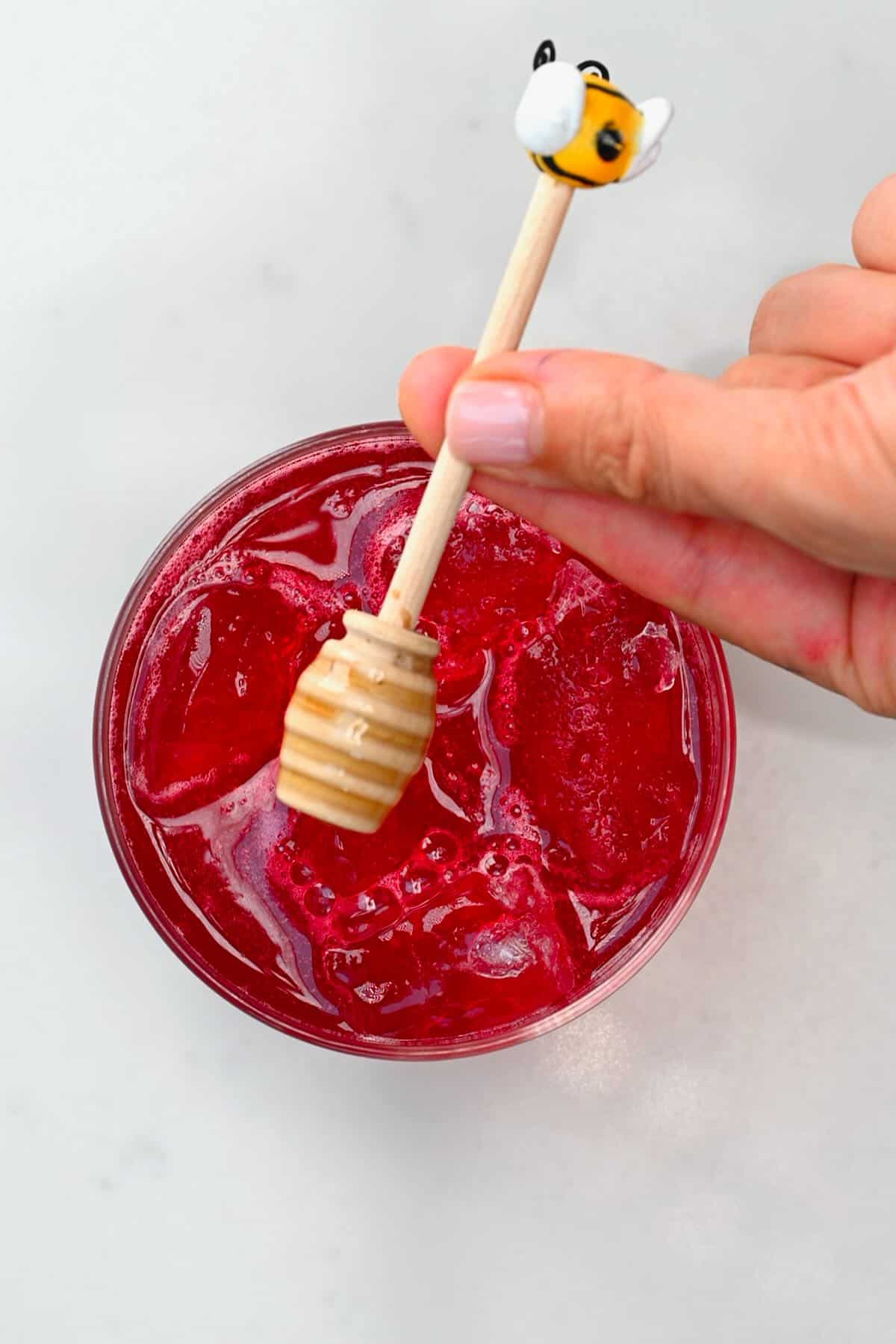
How Long Does Cranberry Juice Last?
Store: once cool, store the homemade cranberry juice in a clean jar/container in the refrigerator for 3-5 days (though drinking it within the first 2-3 is best nutritionally).
When the juice is no longer safe to drink, it will smell off and develop mold.
Freeze: I like to freeze leftover juice in 1/4-1/2 cup portions in an XL silicon ice-cube tray. That way, it’s easy to thaw only what’s needed. This way, you can freeze the healthy cranberry juice for up to 3 months.
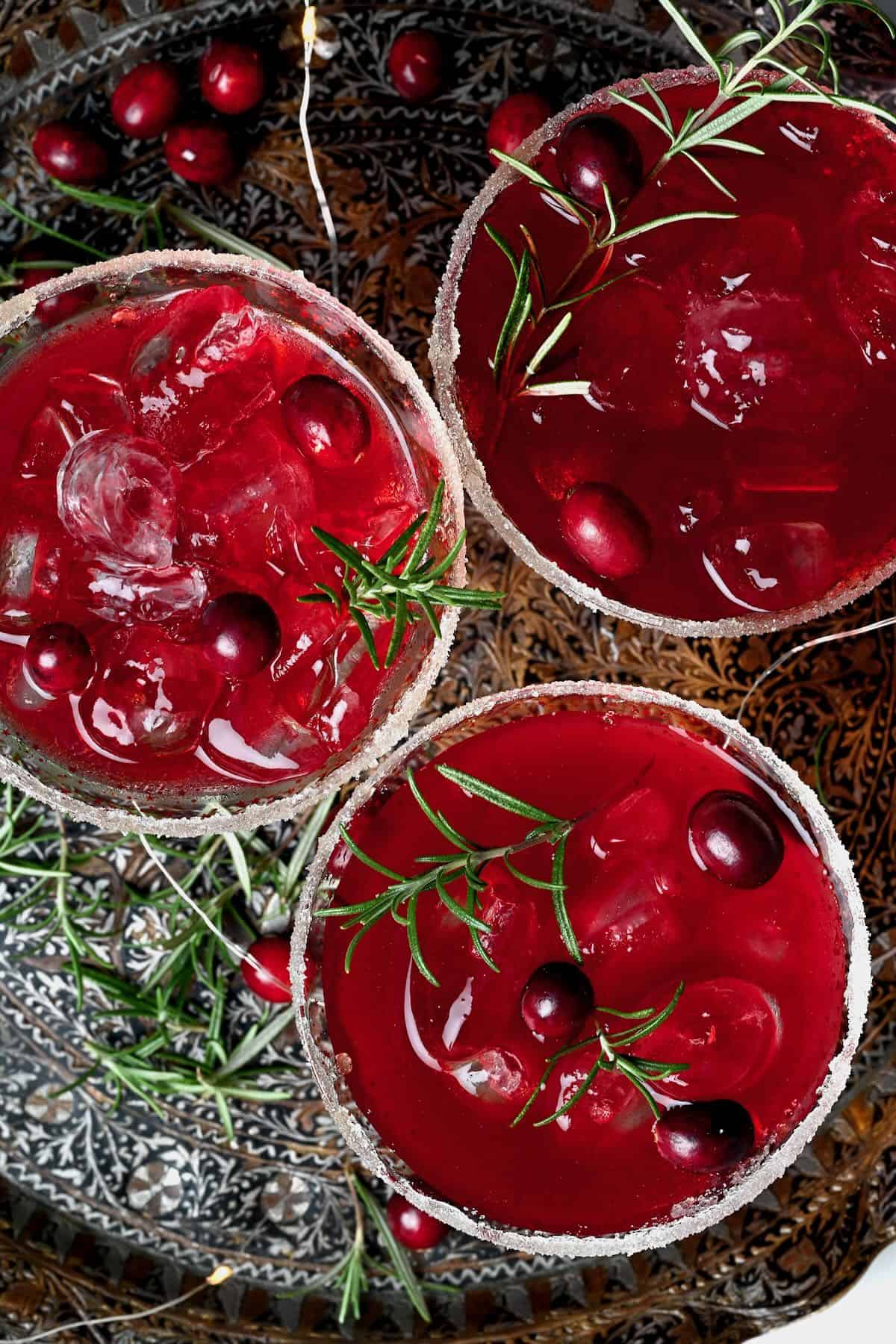
FAQs
You can add this to smoothies, use it to top yogurt (dairy or coconut yogurt) or ice-cream bowls, turn it into homemade cranberry relish or cranberry sauce, add to oatmeal, mix into quick bread recipes like banana bread, etc.
Just note that this puree is unsweetened, so it will be fairly tart. I usually combine the pulp with a bit of cinnamon and sweetener (I use extra honey). Then return it to the stovetop to simmer and reduce, and you have a simple jam/compote style dish for tons of recipes or even to spread over toast!
If you don’t want to use it immediately, you can store it in the freezer for 1-2 months, to use later.
While it is possible, juicing cranberries without cooking leads to juice that’s far too bitter/tart, so I tend to avoid this method.
However, if you want to try it, combine 3 cups of cranberries and 2 cups of water in a high-speed blender and blend into a pulpy juice (around 3 minutes). Allow it to steep for 4-6 hours in the refrigerator, and then add your sweetener to taste (make a syrup if you don’t want to heat the juice), and either strain or leave pulpy. Optionally top up with up to an extra cup of water to dilute the juice further, if preferred.
Not unless you have a powerful slow juicer as the raw berries are so dry/hard that the yield will be ridiculously low otherwise.
Absolutely. Add the cranberries and water to your Instant Pot and cook on high pressure for 6 minutes, then allow it to naturally release the pressure. Give it a mix, add your sweetener of choice, allow it to cool slightly, and then strain.
Yes, you can! I actually haven’t tried yet. However, if you follow this process for canning with a 15 minute processing time (for up to 1000ft altitude; adjust based on your altitude), it should work. I’ve also heard of people who simply store the juice while it’s hot to create a seal and then store it in the fridge for several months.
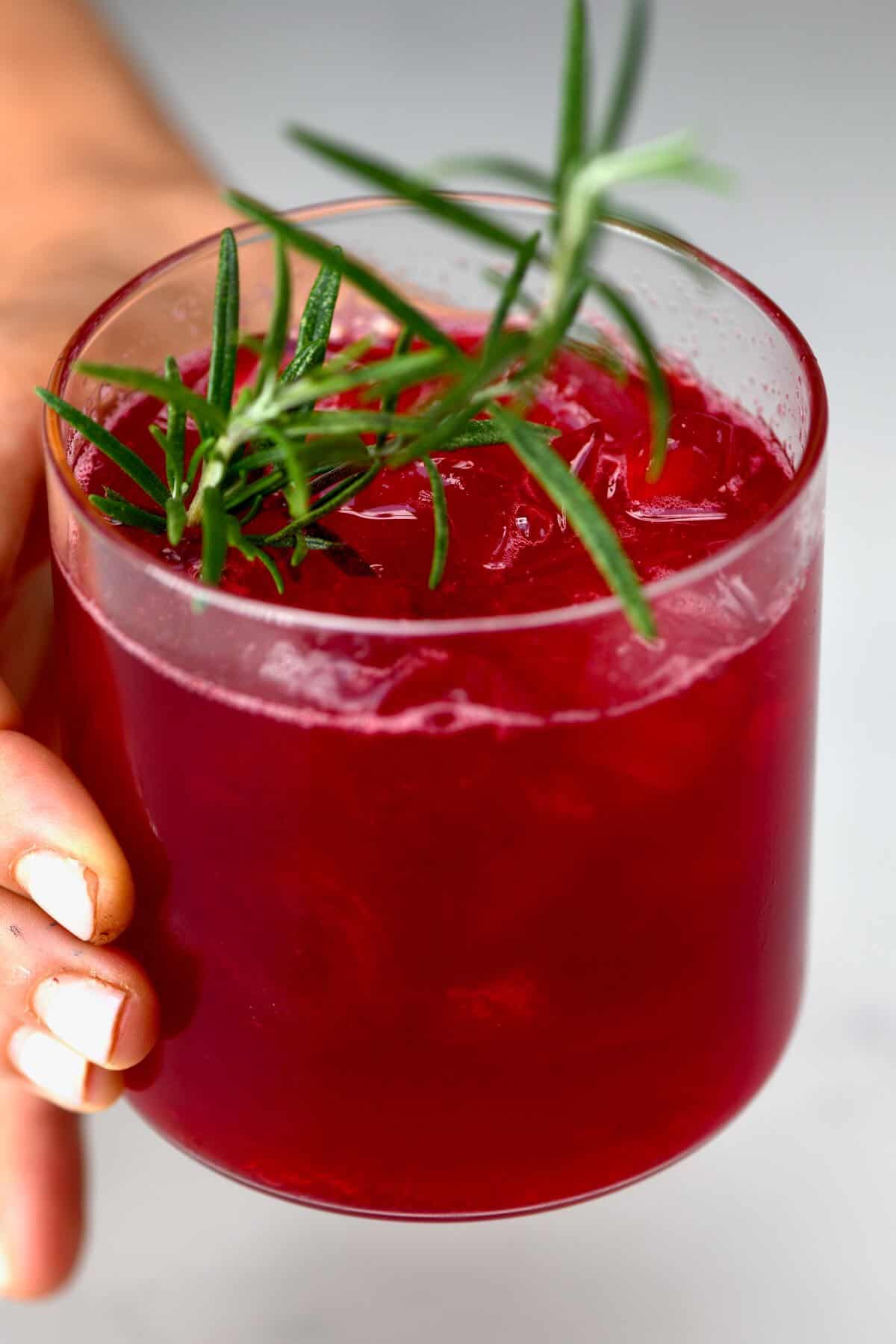
Recipe Tips and Notes
- Use a non-reactive pan: when making cranberry juice, it’s important to use a non-aluminum/ non-reactive pan. The juice can taste slightly metallic otherwise.
- For a more fibrous juice: if you don’t mind a pulp juice, you could transfer the juice and some (or all) of the cooked cranberries to a blender. Blitz into a pulpy juice, then enjoy. Extra fiber for you means extra gut-healthy benefits!
- When to add the honey: some prefer not to use honey in any hot recipes, as it will destroy some of the nutrients. If you’re worried about this, you can add the honey when the juice is only lukewarm instead.
- Sweeten to taste: everyone’s desired sweetness level will differ, so start by adding a small amount and adjust, tasting in-between, until it reaches your sweet spot (no pun intended!).
- Using the cranberry juice: along with enjoying the homemade cranberry juice as-is, you can add it to juice blends, smoothies, cocktails, or even make a quick mocktail by topping it up with some sparkling water. Delicious!
- To increase the recipe: just remember to use a 1:1 ratio of cranberries and water (i.e., 1 cup cranberries to 1 cup water), and that way, you can easily adjust how much you prepare.
- Make sure to use a heat-proof pitcher/jar: otherwise, it may crack when you pour in the hot juice.
More Simple Juice Recipes
- Strawberry kiwi juice
- Pineapple orange juice
- Beetroot ginger juice
- Watermelon juice (and watermelon keg)
- Orange carrot juice
- Wheatgrass shots
- Ginger turmeric immune-boosting shots
If you try this homemade cranberry juice recipe, I’d love to hear your thoughts/questions below. Also, I’d appreciate a recipe card rating below, and tag me in your recipe recreations on Instagram @Alphafoodie!
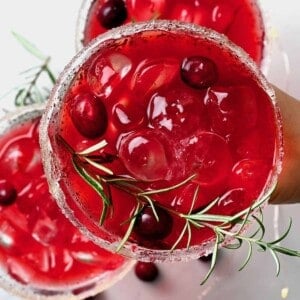
How to Make Cranberry Juice (Stovetop | Sugar Free Optional)
Equipment
Ingredients
- 3 cups cranberries 11.8 oz. Fresh or frozen
- 3 cups water
- sweetener you can use the sweetener of your choice: maple, honey (what I used), granulated sugar, or a sugar-free option like erythritol/stevia. Adjust the amount to taste
Instructions
Step 1: Cook the Cranberries
- In a large pan (or Dutch oven), combine the cranberries and water and bring to a boil over high heat. Once boiling, reduce the heat to a simmer. Cook for a further 20 minutes, or until the cranberries are softened, and the majority have popped.
Step 2: Strain the Cranberry Juice
- Pour the mixture through a sieve or nut milk bag, allowing all the liquid through and then pressing with the back of your spoon (if using a sieve) or squeezing with your hands (if using a nut milk bag, but only when it’s cool enough to do so) to get as much excess liquid from the cranberries as possible.
- Mix well, add your sweetener of choice (to taste) and then allow the juice to cool down.If you’re using a granulated sugar/sweetener, you’ll likely need to return it to the pan to reheat until the sugar dissolves.
- Once cool, either drink the juice immediately or transfer the juice to an airtight jar/bottle in the fridge to save for later!Don’t discard the leftover cranberry puree. Read the FAQs for my suggestions on how to use this!
How to Store?
- Store: once cool, store the homemade cranberry juice in a clean jar/container in the refrigerator for 3-5 days (though drinking it within the first 2-3 is best nutritionally).When the juice is no longer safe to drink, it will smell off and develop mold. Freeze: I like to freeze leftover juice in 1/4-1/2 cup portions in an XL silicon ice-cube tray. That way, it’s easy to thaw only what’s needed. This way, you can freeze the healthy cranberry juice for up to 3 months.
Video
Notes
- Use a non-reactive pan: when making cranberry juice, it’s important to use a non-aluminum/non-reactive pan as the juice can taste slightly metallic otherwise.
- For a more fibrous juice: if you don’t mind a pulp juice, you could transfer the juice and some (or all) of the cooked cranberries to a blender and blitz into a pulpy juice, then enjoy. Extra fiber for you means extra gut-healthy benefits!
- When to add the honey: some prefer not to use honey in any hot recipes, as it will destroy some of the nutrients. If you’re worried about this, you can add the honey when the juice is only lukewarm instead.
- Sweeten to taste: everyone’s desired sweetness level will differ, so start by adding a small amount and adjust, tasting in-between, until it reaches your sweet spot (no pun intended!).
- Using the cranberry juice: along with enjoying the homemade cranberry juice as-is, you can add it to juice blends, smoothies, cocktails, or even make a quick mocktail by topping it up with some sparkling water. Delicious!
- To increase the recipe: just remember to use a 1:1 ratio of cranberries and water (i.e., 1 cup cranberries to 1 cup water), and that way, you can easily adjust how much you prepare.
- Make sure to use a heat-proof pitcher/jar: otherwise, it may crack when you pour in the hot juice.
- Orange juice: orange juice is a popular addition. It pairs wonderfully with the cranberries while adding some natural sweetness. Use oranges, clementines, mandarins, etc. For a very subtle flavor enhancement, add just a tablespoon or two of the juice.
- Lemon/Lime juice: for added brightness to the juice (add alone or alongside orange juice), add a splash of lemon or lime juice.
- Pineapple juice: pineapple juice is a great way to naturally sweeten this recipe, so you can add less additional sweetener. Plus, the combination tastes delicious.
- Apple juice: freshly squeezed apple juice is another way to naturally sweeten the cranberry juice.
- Cinnamon: add a cinnamon stick to the simmering mixture for a subtle aromatic cinnamon-infused juice.
Nutrition
Nutrition information is automatically calculated, so should only be used as an approximation.



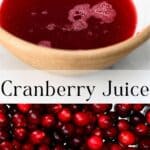
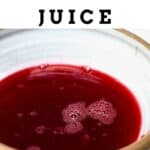
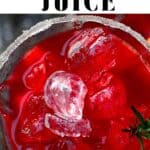
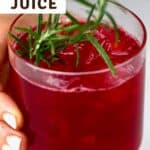

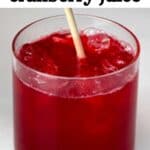
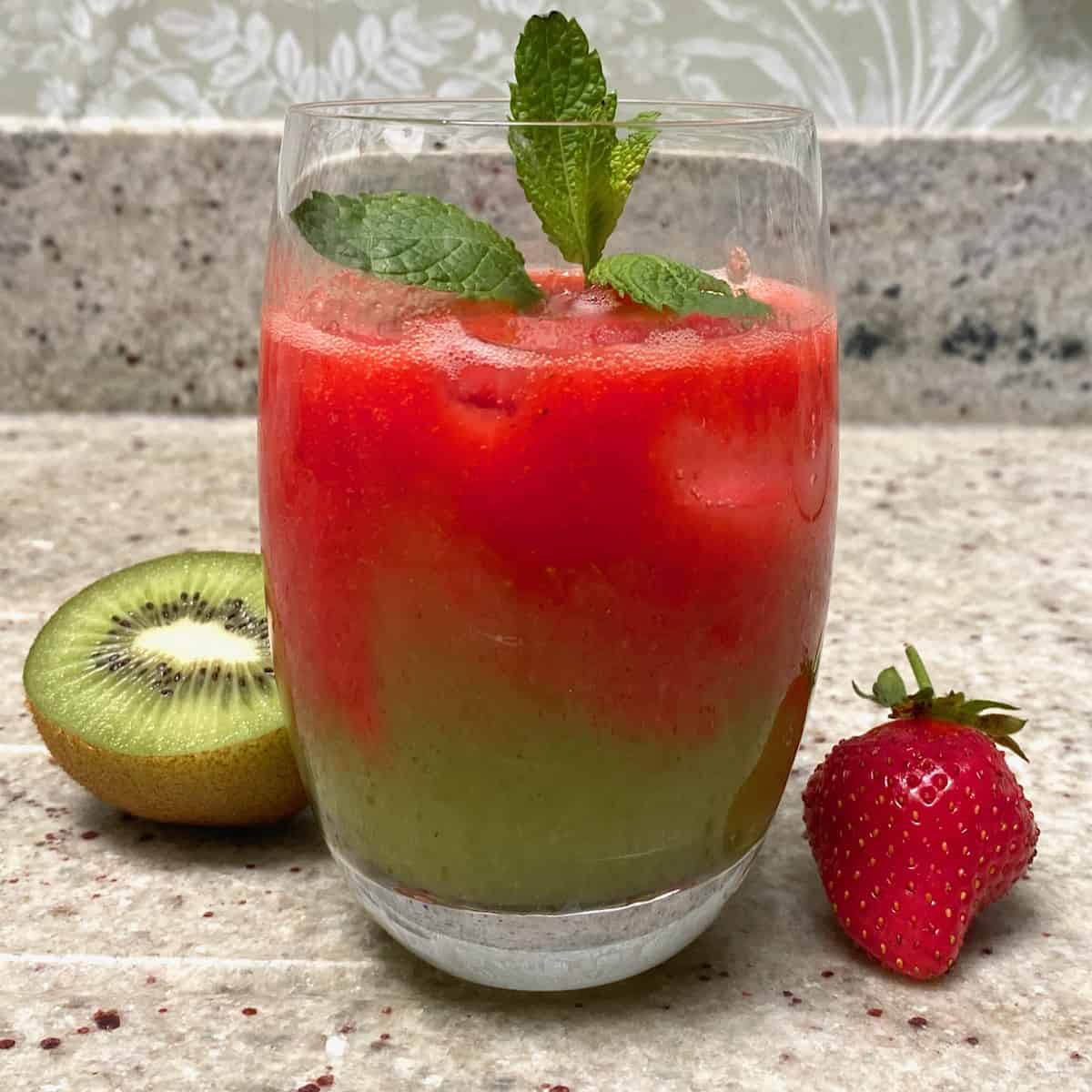
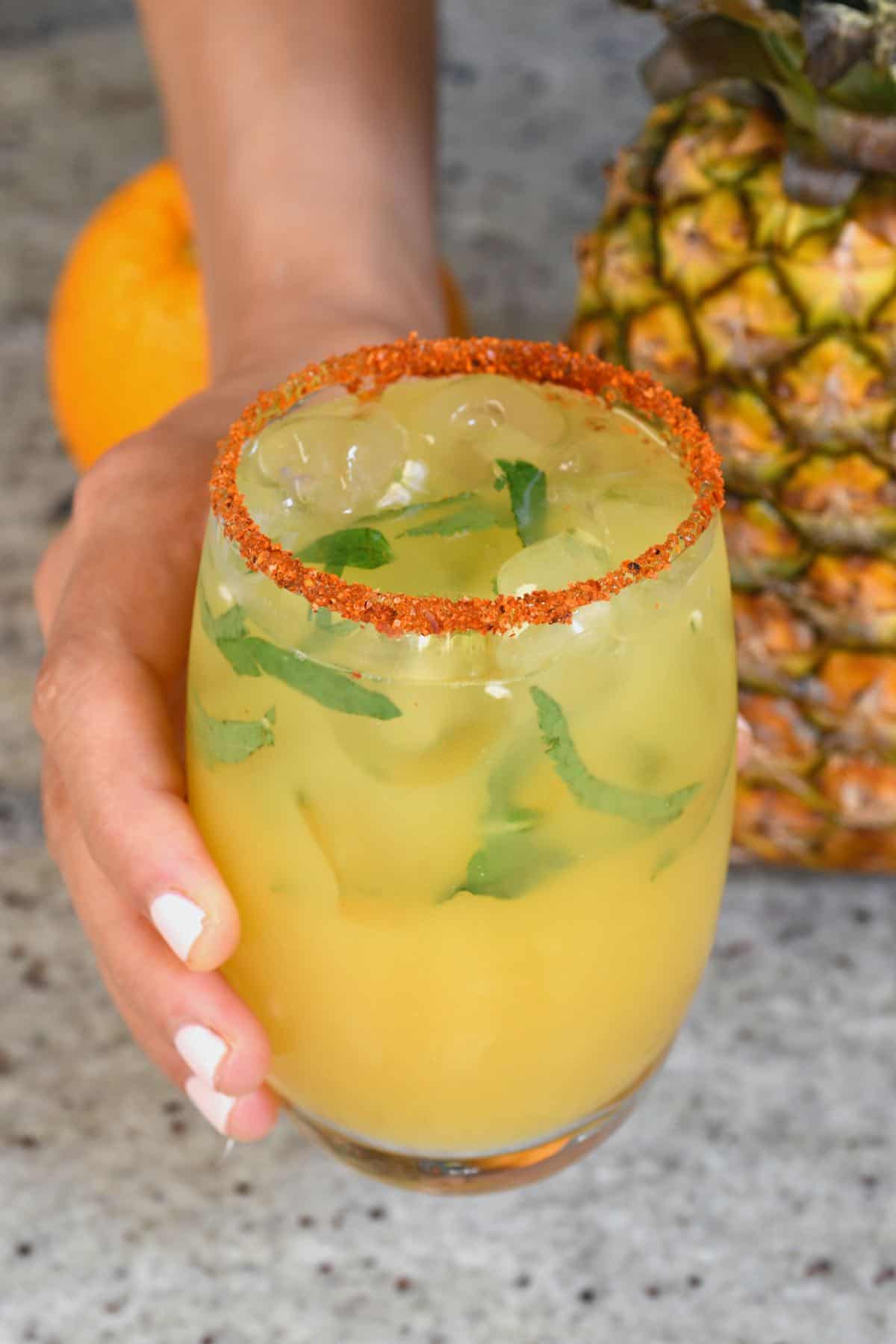










Perfect ,made with frozen cranberries.
Thank you for your feedback, Ann!